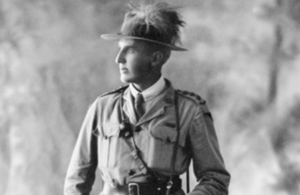WW1 Australian VC recipient Hugo Vivian Hope Throssell
The story of Australian First World War Victoria Cross recipient Hugo Vivian Hope Throssell.

Hugo VIvian Hope Throssell [Credit: Australian War Memorial P00516.001]
66 men from Australia received the Victoria Cross, Britain’s highest award for gallantry, during the First World War. As part of the Centenary Commemorations the people of the United Kingdom marked their gratitude to those courageous men by presenting a bronze memorial plaque to their home country engraved with their names. The plaque is now displayed at the Australian War Memorial. This archive tells their stories.
Name: Hugo Vivian Hope Throssell
DOB: 26 October 1884
Place of Birth: Northam, Western Australia
Date of Action: 29 to 30 August 1915
Place of Action: Hill 60, Gallipoli
Rank: Second Lieutenant
Regiment: 10th Light Horse Regiment, Australian Imperial Force
Hugo Vivian Hope Throssell was born on 26 October 1884 in Northam, Western Australia, where his father later became state Premier. He worked as a farmer before joining the 10th Light Horse Regiment of the Australian Imperial Force on the outbreak of war. He was commissioned as a Second Lieutenant.
Throssell landed at Gallipoli in August 1915, surviving the regiment’s ill-fated charge at the Nek on 7 August. He was awarded his Victoria Cross for most conspicuous bravery and devotion to duty during operations on the Kaiakij Aghala (Hill 60) in the Gallipoli Peninsula on 29th and 30th August 1915. His citation reads:
Although severely wounded in several places during a counter-attack, he refused to leave his post or to obtain medical assistance till all danger was passed, when he had his wounds dressed and returned to the firing-line until ordered out of action by the Medical Officer. By his personal courage and example he kept up the spirits of his party, and was largely instrumental in saving the situation at a critical period.
After the war, Throssell married the novelist Katharine Susannah Prichard and settled down in a farm near Perth. He was, however, intensely affected by his war experiences, becoming a socialist and pacifist. In 1933, he committed suicide leaving behind his wife and son. He was buried with full military honours in Perth, Western Australia.